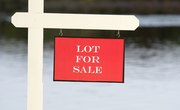
It's not always easy to figure out what your vacant, unbuildable land is worth. On the one hand, the property has no buildings of value and no zoning considerations to worry about. On the other hand, for the land to have value, it also has to have some economic purpose. The challenge comes in both determining the land and figuring out its highest and best use. Once its use becomes established, a value can usually be derived by comparing it to similar properties that have changed hands. You can then use that value to determine a fair price for the land if it's for sale, estimate what you may be able to borrow against it or analyze your net worth as a result of owning it.
Survey the land. Without knowing exactly how much unbuildable land you have and its notable features, it's impossible to accurately value it.
Confirm that the land is unbuildable. A good place to start with this is a city or county's planning or development department.
Establish a highest and best use for the land. Unbuildable land is rarely, if ever, worthless land. For example, you could turn it into a parking lot, an orchard, a grazing pasture or a community garden. Alternately, you could sell it a developer looking for some open space to offset other projects.
Assess the value of any resources on the land. If it has preexisting timber that can be logged or it includes mineral rights in an oil-rich area, those resources will be a part of the value.
Research recent sales of unbuildable vacant land with similar characteristics in the area. Since you might not find a parcel of the exact same size, use the price per square foot or price per acre of land to establish a benchmark that you can use for valuing your property.
Research recent sales of comparable improved land and adjust out the value of the improvements. For example, if you know that your land would be suitable for cattle grazing, but every other sale of grazing land in the area was on ranches with homes, you could subtract the value of the houses and other improvements to find the value of the underlying land on those ranches. You can then derive a price per square foot or acre for your property.
Combine the land value with the value of any extractable resources that it holds to find the total value.
References
- McHenry Township, Illinois: Unbuildable Vacant Land
- KPBS.org: SANDAG Buys 75 Acres of Land as Open Space Habitat
- Lincoln Institute of Land Policy. "Assessing the Theory and Practice of Land Value Taxation," Page 2. Accessed June 17, 2020.
- Lincoln Institute of Land Policy. "Land Value Tax Holds Promise for Cash-Strapped Cities and Towns." Accessed Feb. 5, 2020.
- Angus Stevenson and Maurice Waite. "Concise Oxford English Dictionary," Page 18. OUP Oxford, 2011. Accessed June 17, 2020.
- Wisconsin Department of Revenue. "2020 Property Assessment Process Guide for Municipal Officers," Page 33-34. Accessed June 17, 2020.
- Tax Foundation. "Reviewing the Deadweight Loss Effects of High Tax Rates." Accessed Feb. 5, 2020.
Writer Bio
Steve Lander has been a writer since 1996, with experience in the fields of financial services, real estate and technology. His work has appeared in trade publications such as the "Minnesota Real Estate Journal" and "Minnesota Multi-Housing Association Advocate." Lander holds a Bachelor of Arts in political science from Columbia University.

